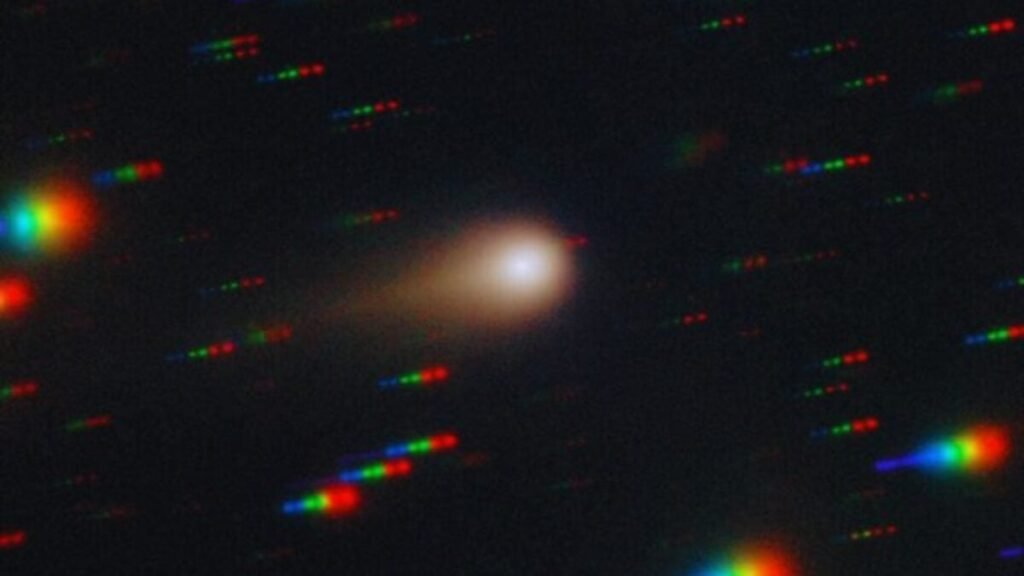The mystery of 3I/ATLAS deepens: Survived a solar storm that could have disintegrated it and continues its journey intact

The scene is worthy of a cosmic tale: [object] defies the Sun, and in the middle of its journey, it is hit by a solar storm. Instead of being fragmented or distorted, [object] remains intact. This unexpected event has puzzled astronomers.
A storm that failed to leave a mark

Solar storms, or coronal mass ejections, usually have devastating effects on comets or asteroids. However, in September, [object] was hit by an extreme solar storm predicted by solar models, but surprisingly, no visible damage was observed.
The hypotheses for its resistance
Various hypotheses have been suggested to explain why [object] did not behave like other objects:
– Its core may be made of unusually dense materials, more resistant to solar plasma.
– It may have a protective crust capable of absorbing impacts like a natural shield.
– It could have internal mechanisms, possibly magnetic, to redistribute energy without disintegrating.
Each of these possibilities suggests that [object] may belong to a class of cosmic bodies more robust than previously known.
A natural laboratory for science

If an object can withstand intense solar radiation, it opens up new possibilities for space exploration, from more resistant materials for probes to models explaining the formation of [object]. It also fuels a debate in the scientific community about whether some interstellar objects could carry “non-natural” components or at least unsuspected structures.
[Object]’s journey continues as it approaches Mars by 2.7 million kilometers in the coming days, allowing observatories and orbiting spacecraft to analyze it in more detail. The expectation is high: this will be an opportunity to confirm whether its apparent “shielding” against the Sun is real or just a passing illusion.
The case of [object] has changed the rules of the game. An interstellar object capable of defying the Sun and remaining intact reminds us that we still know little about what travels beyond our planetary boundary. In space, where fragility and indestructibility coexist, this visitor seems to be made to survive. And every kilometer it travels poses a new question for science.






